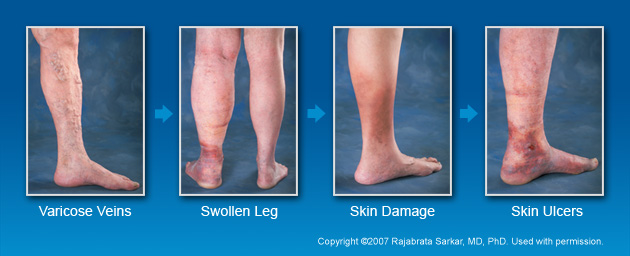For milder cases of varicose veins and spider veins, physicians generally recommend a variety of self-help, non-surgical measures to ease discomfort and prevent the condition from worsening. These measures include exercise, losing weight, wearing compression stockings, elevating the legs and avoiding long periods of standing or sitting.
Direct medical treatments for spider veins include sclerotherapy, in which the veins are sealed with injections of a chemical solution that closes the vein walls. Spider veins can also be treated with non-invasive lasers, which cause the veins to fade and disappear.
For more severe cases of varicose veins, in which the veins bulge beyond the skin or cause significant pain and swelling, relief usually requires a medical intervention. The traditional surgical approach has been vein stripping, a procedure commonly requiring general anesthesia in which incisions are made near the knee and groin and the diseased primary vein is literally pulled from the body using a device. While reasonably effective, vein stripping generally produces significant post-operative pain and bruising, and usually requires a lengthy and uncomfortable recovery period.

In the United States, however, vein stripping has been rendered virtually obsolete by new, minimally invasive catheter technology that enables even severe varicose veins to be successfully treated in a doctor’s office under a local anesthetic in just a few minutes. A device is inserted into the diseased vein, where a catheter or fiber delivers either radiofrequency (RF) or laser energy to heat and seal the vessel. The technique is extremely successful and far less painful and traumatic to the patient than vein stripping.
Endovenous laser (EVL) devices utilize an optical fiber to deliver extremely high heat – over 700 degrees centigrade – that boils the blood in the vein to create a clotting effect that seals the vein as the device is withdrawn. Radiofrequency devices operate at far lower temperatures to heat and shrink the vein walls, limiting the impact on surrounding tissues and, according to a clinical study, causing significantly less pain and bruising than laser.
Physicians using the VNUS ClosureFAST™ catheter, the only radiofrequency device on the market today for the treatment of venous reflux, report that most patients return to normal activity almost immediately following the procedure, with little or no post operative pain.
